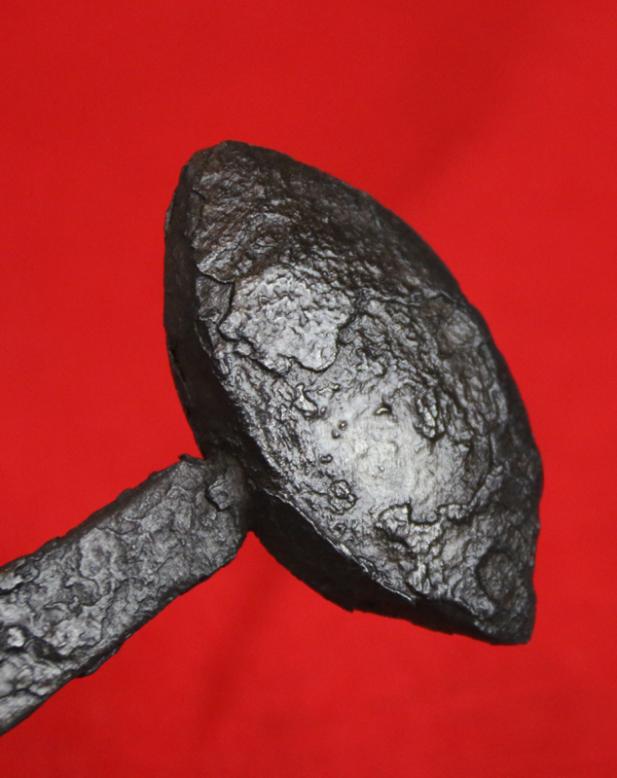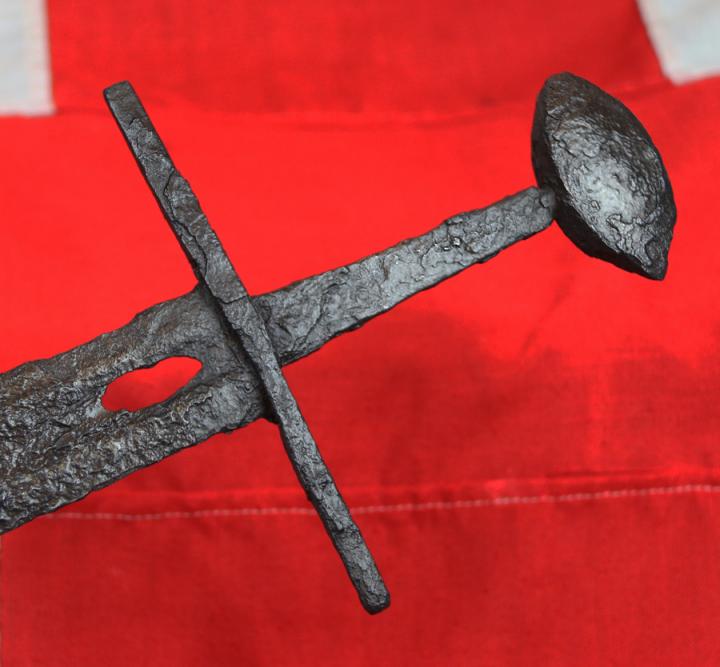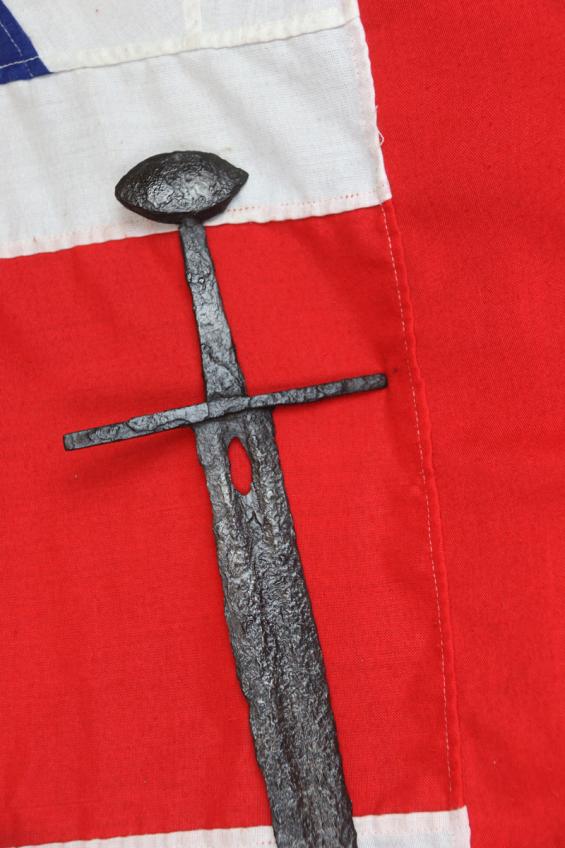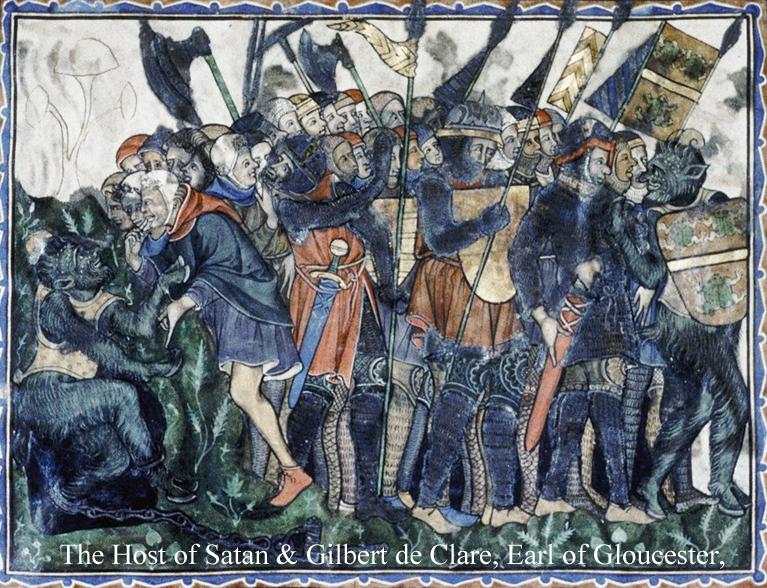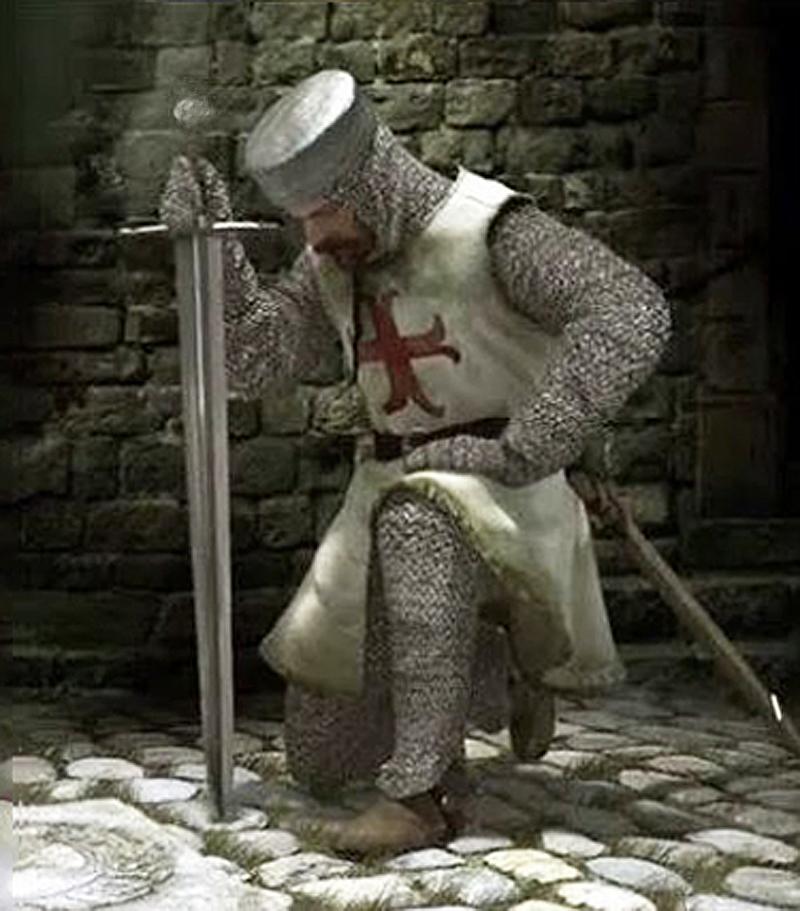An Original 900 Year Old Templar Crusader Knights era ‘Sword of War’. A Broadsword With Brazil Nut Pommel. From the Period Immediately Following the Norman Conquest & As Used By the Templar Knights To Reclaim The Holy Land.
This wonderful antiquity would make a spectacular centrepiece to any new or long established fine collection, or indeed a magnificent solitary work of historical art, for any type of decor both traditional or contemporary and a fabulous original ‘statement piece’ for any home. In the world of collecting there is so little remaining in the world from this highly significant era in European and British history.
Earlier this year we acquired and sold another, but the rarest of the rare, a Templar knights sword, actually stamped and forged by a Templar armourer. This sword bears no such extremely rare Templar markings, which is actually more usual, so, it is thus priced accordingly. Yet it is none the less, an extraordinary, historical, and rare artifact of the era, and an absolute iconic example of the arguably most famous era in all knightly history.
A fine example piece, from the ancient Templar knightly age, from almost a thousand years past. Although this sword is now in an obvious ancient, and historical, russetted condition, with some elements lacking, every item made of iron from this era, such as the rarest of swords and daggers, even in the Royal Collection, are in this very same state of preservation. In fact, the fact they survive at all is both extraordinary and remarkable. Furthermore, all the more remarkable that any survived the crusade in order to return, as by far the majority of Knights Templar, Knights Hospitaller etc., that journeyed to the Holy Land on pilgrimage, failed to return.
Around 900 Years Old. A hand-forged iron knightly sword, the very same as used by the templar Knights of Jerusalem, comprising a narrow two-edged blade with shallow fuller to both faces, short ricasso, slender square-section cross guard tapering slightly, flat tang, brazil-nut pommel. 12th-early 13th century, used in the early Crusades Period by Knights, such as the Knights of Jerusalem the Knights Templar, Knights of St John, made from time of King Stephen, and used into the times of King Henry the IInd, and King Richard the Ist.
Although made for a Knight around the time of the reign of the Norman king, King Stephen, it was likely also used by succeeding knights for the next 300 years or so, as such swords were of immense value at the time and it was likely passed down from father to son or knight to knight, and thus used as a ‘sword of war’ right into the era of the battles of Crecy, Poitiers, and King Henry V’s age defining victory, at Agincourt. *See further reference to this below This assumption is realistically made due to swords at that time being incredibly valuable and most highly prized, and the style and form of swords during that period had only changed cosmetically, and thus ancestral swords, as this would have been in King Henry’s day, still functioned perfectly well, despite being used for the past three centuries. There are records of swords recovered from Agincourt of being knightly ‘ancestral swords’, made and used originally in the Crusades, especially the swords from the hundreds of slain French knights of Agincourt that were descended from crusader knights from the nobility of France.
A Single-Handed, Knights sword, made in the 12th century {circa 1120's} and constantly used in the early Crusades period, by a Knight and hand forged by an armourer, during the time of England's King Henry Ist, and used into the reigns of King Henry the IInd, and King Richard Ist, the Lionheart, and potentially, for the following century or even longer.
The Knights Templar were an elite fighting force of their day, highly trained, well-equipped, and highly motivated; one of the tenets of their religious order was that they were forbidden from retreating in battle, unless outnumbered three to one, and even then only by order of their commander, or if the Templar flag went down. Not all Knights Templar were warriors. The mission of most of the members was one of support – to acquire resources which could be used to fund and equip the small percentage of members who were fighting on the front lines. There were actually three classes within the orders. The highest class was the knight. When a candidate was sworn into the order, they made the knight a monk. They wore white robes. The knights could hold no property and receive no private letters. They could not be married or betrothed and could not have any vow in any other Order. They could not have debt more than they could pay, and no infirmities. The Templar priest class was similar to the modern day military chaplain. Wearing green robes, they conducted religious services, led prayers, and were assigned record keeping and letter writing. They always wore gloves, unless they were giving Holy Communion. The mounted men-at-arms represented the most common class, and they were called "brothers". They were usually assigned two horses each and held many positions, including guard, steward, squire or other support vocations. As the main support staff, they wore black or brown robes and were partially garbed in chain mail or plate mail. The armour was not as complete as the knights. Because of this infrastructure, the warriors were well-trained and very well armed. Even their horses were trained to fight in combat, fully armoured. The combination of soldier and monk was also a powerful one, as to the Templar knights, martyrdom in battle was one of the most glorious ways to die.
The Templars were also shrewd tacticians, following the dream of Saint Bernard who had declared that a small force, under the right conditions, could defeat a much larger enemy. One of the key battles in which this was demonstrated was in 1177, at the Battle of Montgisard. The famous Muslim military leader Saladin was attempting to push toward Jerusalem from the south, with a force of 26,000 soldiers. He had pinned the forces of Jerusalem's King Baldwin IV, about 500 knights and their supporters, near the coast, at Ascalon. Eighty Templar knights and their own entourage attempted to reinforce. They met Saladin's troops at Gaza, but were considered too small a force to be worth fighting, so Saladin turned his back on them and headed with his army towards Jerusalem.
Once Saladin and his army had moved on, the Templars were able to join King Baldwin's forces, and together they proceeded north along the coast. Saladin had made a key mistake at that point – instead of keeping his forces together, he permitted his army to temporarily spread out and pillage various villages on their way to Jerusalem. The Templars took advantage of this low state of readiness to launch a surprise ambush directly against Saladin and his bodyguard, at Montgisard near Ramla. Saladin's army was spread too thin to adequately defend themselves, and he and his forces were forced to fight a losing battle as they retreated back to the south, ending up with only a tenth of their original number. The battle was not the final one with Saladin, but it bought a year of peace for the Kingdom of Jerusalem, and the victory became a heroic legend.
Another key tactic of the Templars was that of the "squadron charge". A small group of knights and their heavily armed warhorses would gather into a tight unit which would gallop full speed at the enemy lines, with a determination and force of will that made it clear that they would rather commit suicide than fall back. This terrifying onslaught would frequently have the desired result of breaking a hole in the enemy lines, thereby giving the other Crusader forces an advantage.
The Templars, though relatively small in number, routinely joined other armies in key battles. They would be the force that would ram through the enemy's front lines at the beginning of a battle, or the fighters that would protect the army from the rear. They fought alongside King Louis VII of France, and King Richard I of England.3 In addition to battles in Palestine, members of the Order also fought in the Spanish and Portuguese Reconquista. It could also be enhanced by affixing to a rectangular bespoke display panel.We will include for the new owner a complimentary wooden display stand, but this amazing ancient artefact of antiquity would also look spectacular mounted within a bespoke case frame, or, on a fine cabinet maker constructed display panel.
Code: 23241
9995.00 GBP



